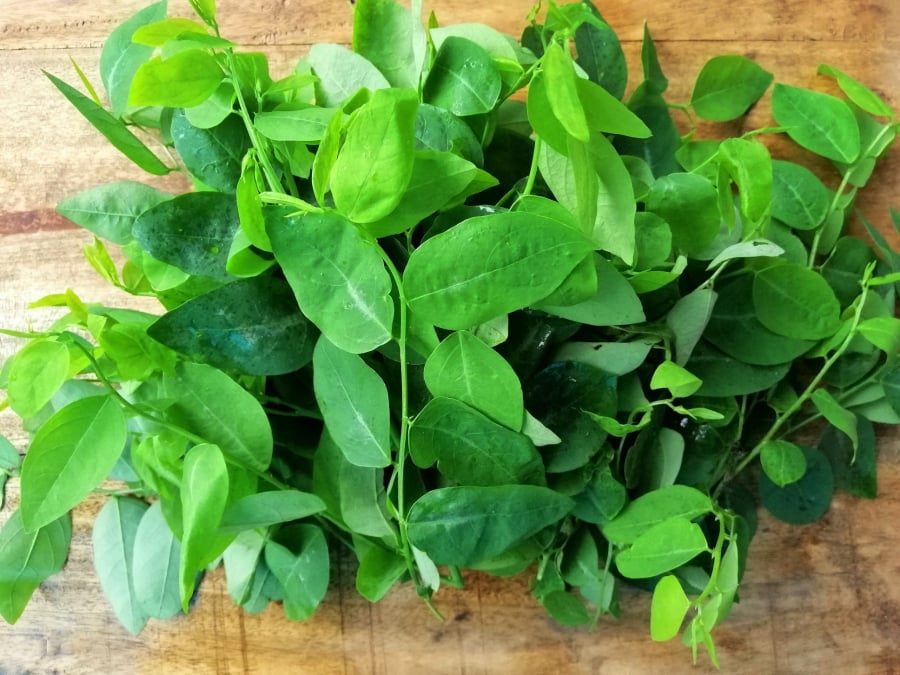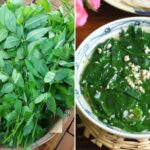Water celery, or Rau ngót, is a beloved vegetable in Vietnam, widely embraced for its nutritional benefits and versatility in cooking. Its prominence in Vietnamese cuisine is evident from the rural countryside to bustling cities, and its medicinal properties are revered in traditional folk remedies.

Water celery is a staple in the daily diets of Vietnamese people, and its cultivation is facilitated by the country’s tropical climate. Homegrown water celery is readily accessible, requiring minimal care and offering year-round harvests.
Beyond its culinary applications, water celery is a veritable treasure trove of nutrients. According to nutritional experts, this vegetable boasts significantly higher levels of vitamin C compared to renowned citrus fruits like oranges and lemons.
Remarkably, water celery contains up to 10 times more vitamin B2 and 45 times more vitamin C than common vegetables. Additionally, it is a rich source of vitamins A and B, fiber, and minerals such as calcium, iron, and magnesium, offering a plethora of health benefits.
The Multifaceted Benefits of Water Celery

Detoxification and Fever Reduction: Water celery possesses a cooling nature and a sweet flavor. It aids in detoxification, promotes diuresis, helps reduce fever, and increases saliva production.
Lowering Blood Pressure: Water celery contains papaverine, a compound that induces vasodilation and counteracts smooth muscle contractions. As such, it effectively helps lower blood pressure.
Diabetes Management: For individuals with diabetes, consuming water celery is beneficial as it contains inulin, which slows down the absorption of glucose from food. Inulin also generates heat energy that is nine times lower than that produced by fats.
Weight Loss: Water celery juice is an effective way to lose weight, especially targeting abdominal fat.
Lactation Support: Water celery increases lactation in nursing mothers due to the estrogen-like effects of its chemical compounds, sterols. It also contains ephedrine, beneficial for those suffering from the flu.
Reduced Risk of Infections: Water celery is an exceptional source of vitamin C, surpassing the levels found in oranges or guavas. This makes it a scientifically recognized source of high vitamin C content, essential for wound healing, optimal brain function, and enhancing the immune system.
Boosted Immunity: The leaves of water celery are rich in vitamin A, which helps prevent eye diseases, supports cell growth, strengthens the immune system, aids in reproduction, and promotes healthy skin.
Growing the “National Vegetable” in a Container Garden
Cultivating water celery at home is not only simple but also highly convenient, especially for those with limited space like balconies or rooftops.
To grow water celery, you’ll need a container with a depth of about 20-30 cm and adequate drainage holes to prevent waterlogging. The soil should be loose, rich, and nutritious, and you can enhance its fertility by mixing in some organic fertilizer.
The easiest way to propagate water celery is through stem cuttings from a mature plant. Place the cuttings in the soil and water them regularly without overdoing it. Water celery thrives in natural light, so position your container in a spot that receives gentle sunlight, avoiding harsh, direct rays.
Within 3-4 weeks, your water celery will start to sprout and flourish, providing a fresh, delicious, and wholesome supply of this beloved vegetable. Water celery is not just a familiar ingredient in Vietnamese cuisine but also a powerhouse of nutrients that bestows numerous health benefits upon those who consume it.
Water celery, with all its remarkable qualities, is truly an invaluable addition to any meal, enriching the dining experience and contributing to the well-being of families across the nation.
Is It True That Giving Up Rice and Noodles Can Lead to Rapid Weight Loss?
“There’s a buzz online about a revolutionary weight loss method that’s capturing everyone’s attention. This approach focuses on curbing your intake of main meals, with some even forgoing rice and noodles – essentially, any food containing carbohydrates. This method promises to help individuals shed those extra pounds and achieve their dream physiques.”
What Should Women Over 40 Eat for Glowing, Youthful Skin?
As we age, our skin loses its natural elasticity and radiance, a concern for many women over 40. To maintain a youthful and vibrant complexion, it’s essential to focus on a diet rich in collagen, antioxidants, and protein. By incorporating these key nutrients, you can achieve a supple and glowing canvas that radiates health and beauty from within.














